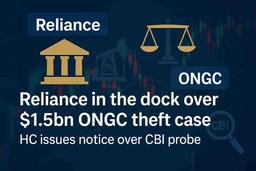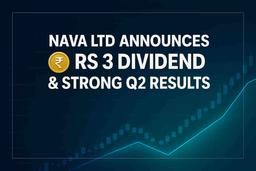Tata Motors Commercial Vehicle Shock: Rs 867 Crore Loss Revealed, But What's Driving Revenue Up?
Auto
|
Updated on 13 Nov 2025, 12:38 pm
Reviewed By
Satyam Jha | Whalesbook News Team
Short Description:
Stocks Mentioned:
Detailed Coverage:
Tata Motors Commercial Vehicles (CV) has announced a substantial net loss of Rs 867 crore for the second quarter of the fiscal year 2026 (Q2 FY26). This marks a significant downturn compared to the Rs 498 crore consolidated profit recorded in the corresponding quarter of the previous fiscal year. The primary reason cited for this loss is a one-time impairment charge, which is an accounting adjustment reflecting a decrease in the value of an asset, specifically an investment in Tata Capital.
Despite the reported loss, the commercial vehicle division demonstrated resilience in its top line. Consolidated revenue for the quarter grew by 6.26% on a year-on-year basis, reaching Rs 18,491 crore from Rs 17,402 crore in Q2 FY25. The company also reported a healthy 12% year-on-year volume growth. Girish Wagh, Managing Director & CEO of Tata Motors, expressed optimism, stating that the demand across various segments was catalyzed by the rollout of GST 2.0 and the onset of the festive season. He attributed the volume growth to enhanced product availability, a refined pricing strategy, and intensified market activations.
Impact This news has a moderate impact on investor sentiment for Tata Motors, as the significant one-time loss might raise concerns. However, the underlying revenue and volume growth suggest operational strength. Investors will be looking for clarity on the recurring nature of such charges and the sustainability of demand. Rating: 6/10
Difficult terms explained: Impairment Charge: This is a financial accounting term that refers to a reduction in the book value of an asset when its market value or recoverable amount falls below its carrying amount on the balance sheet. In this case, Tata Motors recognized a loss because its investment in Tata Capital was deemed to be worth less than initially recorded. Consolidated Revenue: This represents the total revenue earned by a parent company and all of its subsidiaries, combined as if they were a single entity. It provides a comprehensive view of the entire group's financial performance.
Personal Finance Sector

Infosys Buyback Bonanza: Rs 1800 Offer vs. Rs 1542 Price! Expert Nithin Kamath Reveals The Shocking Tax Twist!

NPS Unleashed: 100% Equity Option Coming for Your Retirement Fund! Big Changes Ahead!

Your Aadhaar Number is Exposed! Unlock This Secret Digital Shield to Stop Online Theft NOW!
Energy Sector

India's Green Energy Surge Hits Bottleneck! Tenders Slowing Down – Big News for Investors

Global Energy Summit Ignites India's Green Future: Puri Gears Up for Mega Event!

ADANI's MEGA FUNDING BLOOM: $750 Million Debt Boost for Infra Expansion!

Reliance Industries Accused of $1.55 Billion Gas Theft from ONGC Wells: Court Hearing Set!









